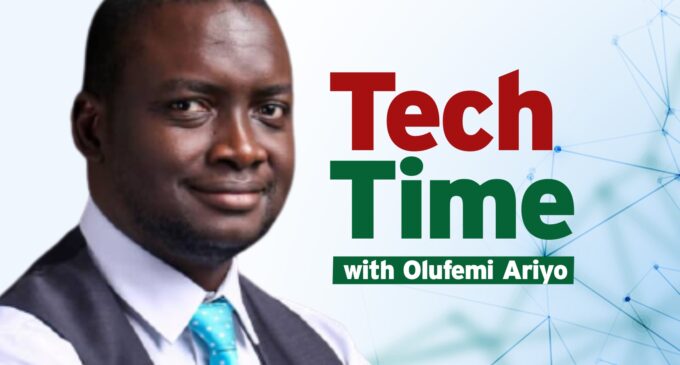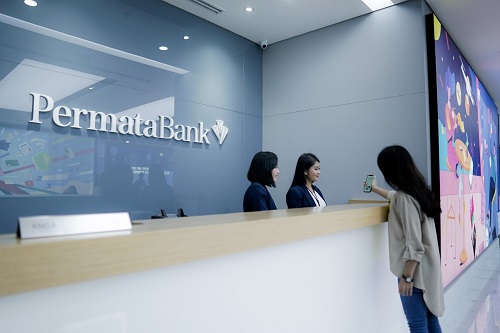Blockchain technology, non-fungible tokens, and the future of exchange

The cryptocurrency market value, which is only a little more than a decade old, hit $3 trillion on a global scale at the end of 2021. This market for trading digital assets has quadrupled from 2020 (with a $758 billion year-end value), as more people have become comfortable with tokens like Bitcoin and networks like Ethereum. The huge possibilities of decentralized finance and non-fungible tokens (NFT) have become a rallying point for interesting discussions today.
It is important to note that cryptocurrencies like Bitcoin and Ethereum are founded on blockchain technology, which will continue to impact how we do business in phenomenal ways.
The prototype of a blockchain datesback to the early 1990s when computer scientist Stuart Haber, mathematicianDave Bayer, and physicist W. Scott Stornetta applied cryptographic techniques (used to ensure secrecy and integrity of data) in a chain of blocks to secure digital documents from data manipulation. The amazing contributions of these and several others have led to the creation of Bitcoin, as the first decentralized digital currency system.
However, the big advantage also poses some threats, as the digital currency is decentralized and tamper-proof from any person, company, or government. They were initially referred to as cyber currencies and started gaining popularity in 2008 when Bitcoin was introduced. Over the past few years, cryptos have gained amazing acceptance and popularity, with more people investing in them. Just as the foundation of all currencies of the world is trust, the continued demand for the digital currency juxtaposed with its limited supply has caused it to experience continuous price increment.
Although, Bitcoin has become increasingly popular with people who need to send money across countrieswithout interference from banks or governments, its rapid rise in value has made it difficult for others who have invested in it to know what they should do with their Bitcoins.
Furthermore, bitcoins require platforms to foster the ease of trading called exchanges. The history of exchange dates back to the creation of the barter system and has grown over time into more sophisticated digital platforms. Alex Brown & Sons traded foreign currencies around 1850 and was a leading currency trader in the USA. In 1880, J.M. do Espírito Santo de Silva (Banco Espírito Santo) applied for and was given permission to engage in a foreign exchange trading business.
The year 1880 is considered by at least one source to be the beginning of modern foreign exchange – the gold standard began in that year. Prior to the First World War, there was much more limited control of international trade. Motivated by the onset of war, countries abandoned the gold standard monetary system. Today, with advancements in technology and multidisciplinary contribution fostered by the internet, exchanges have made life easy for a lot of us across different continents.
For the purpose of harmony within this trail of thoughts, a cryptocurrency exchange, or digital currency exchange (DCE), is a business platform that allows customers to trade cryptocurrencies or digital currencies for other assets, such as conventional fiat money or other digital currencies. Some exchanges may accept credit card payments, wire transfers, or other forms of payment in exchange for digital currencies or cryptocurrencies.
A cryptocurrency exchange can simply take each user’s bid while getting a spread as its transaction commission for service rendered. Dedicated cryptocurrency exchanges such as Binance and Coinbase allow cryptocurrency trading and withdrawals, thereby allowing easier extension services. A typical rave at the moment among several possibilities is the creation and sales of Non-Fungible Tokens (NFTs).
Non-fungible simply means unique and irreplaceable, and these tokens can becreated on the Binance NFT Marketplace, or on the Binance Smart Chain (BSC) using Defi platforms like Featured By Binance, BakerySwap, or TreasureLand. BSC offers low fees, quick transaction times, and a growing NFT community. There are many platforms to choose from, as one is simply required to fill in their NFT details, upload the digital art or file, and pay the minting fee. If you feel like selling your NFT, you can place them on a number of NFT marketplaces. Some of these include OpenSea, Axie Marketplace, and Larva Labs/CryptoPunks.
Moreover, who says elephants can’t dance, as you can also make some decent money trading NFTs. Simply put, NFT is a digital collectible record of one-off paintings, say. If there’s a significant demand for your NFT, prices can go up. Beeple, a visual artist, sold an NFT called Everydays: the First 5000 Days (a collage of 5000 digital images created by Winkelmann for his Everydays series) for more than $69 million.Another analogy of an NFT is the coffin dance NFT that recently sold for $1,047,806.
Anyone can create one and perhaps even make it look almost identical to a real one. But it’s just not the same in the mind of a collector. Onebig question to address is what precisely an NFT can represent. Can an NFT onlybe digital items or some real-world artworks? While it’s not that common, physical collectibles can be represented by NFTs. In such cases, the private key to the wallet containing the unique token (NFT) is usually inbuilt or provided with the value piece. This and many more are some of the spinoffs of a decentralized system that secures assets while ensuring control rests in the blockchain system, not persons.
Furthermore, on how to mint and sell an NFT, 1. Choose your unique digital asset to turn into an NFT – Examples include custom painting, pictures, music, video game collectible, meme, GIFs, or even a tweet). An NFT is a unique digital item with a sole owner, and that uniqueness gives an NFT value. 2. Choose your blockchain – Determinethe blockchain technology you intend to use for your NFT.
The most popular among NFT artists and creators is Ethereum (CRYPTO:ETH). Otheroptions include Tezos, Polkadot, Cosmos, and Binance Smart Chain. 3. Set up your digital wallet – The wallet will enable you to fund the initial payment to mint your NFT and provide you with storage access to your digital assets. Some NFT wallets include Metamask, Math Wallet, AlphaWallet, Trust Wallet, and Coinbase Wallet. 4. Select your NFT marketplace – Some of the top NFT marketplaces include OpenSea, Axie Marketplace, Larva Labs/CryptoPunks, NBA Top Shot Marketplace, Rarible, SuperRare, Foundation, Nifty Gateway, Mintable, and ThetaDrop.
To digress a bit with an example of how the African youths can learn from Sam Bankman-Fried’s story of how he foundthe crypto exchange FTX in Hong Kong before age 30. With a net worth of US$22.5 billion, the founder of futures exchange FTX was named the youngest person on the 2021 Forbes 400 list of wealthiest people in the world. Hedonated over US$5 million to Joe Biden’s 2020 campaign against Donald Trump but regrets not getting in on his friend’s bitcoin project in 2013. His planis to donate most of his wealth to causes and organizations that he supports.
Yes, exchanges will create the sync between fiat and digital currencies and one of such is Binance. This is a cryptocurrency exchange (the largest in the world in terms of daily trading volume of cryptocurrencies – 11 April 2022 –$18,381,757,728). It was founded in 2017 and is registered in the Cayman Islands. Binance was founded by Changpeng Zhao, a developer who had earlier created a high–frequency trading software. Binance was initially based in China but moved headquarters out of China following the Chinese government’s increasing regulation of the digital currency.
In 2021, Binance was investigated by both the United States Department of Justice and the Internal Revenue Service on allegations of money laundering and tax offenses. In February 2022, Binance gave $10 million for humanitarian needs in Ukraine in the middle of the 2022 Russian invasion of Ukraine. Other exchanges include Bitfinex, Kraken, Coinbase, and Kucoin among others. You can read more in my previous article on Cryptocurrencies and the future of money.
My concluding thought is that the African space is a huge market that remains grossly untapped with an amazing youth population. More crypto exchanges are realizing this and opening their doors to the over 1.3 billion people market. Yes, the future is digital – work, play, money, and market; and everyone can participate in the engagement as a trader, collector, NFT minter, exchange owner, and or even create their own cryptocurrency. I remain Yours in tech, Olufemi Ariyo email: [email protected]
Source : thecable.ng



